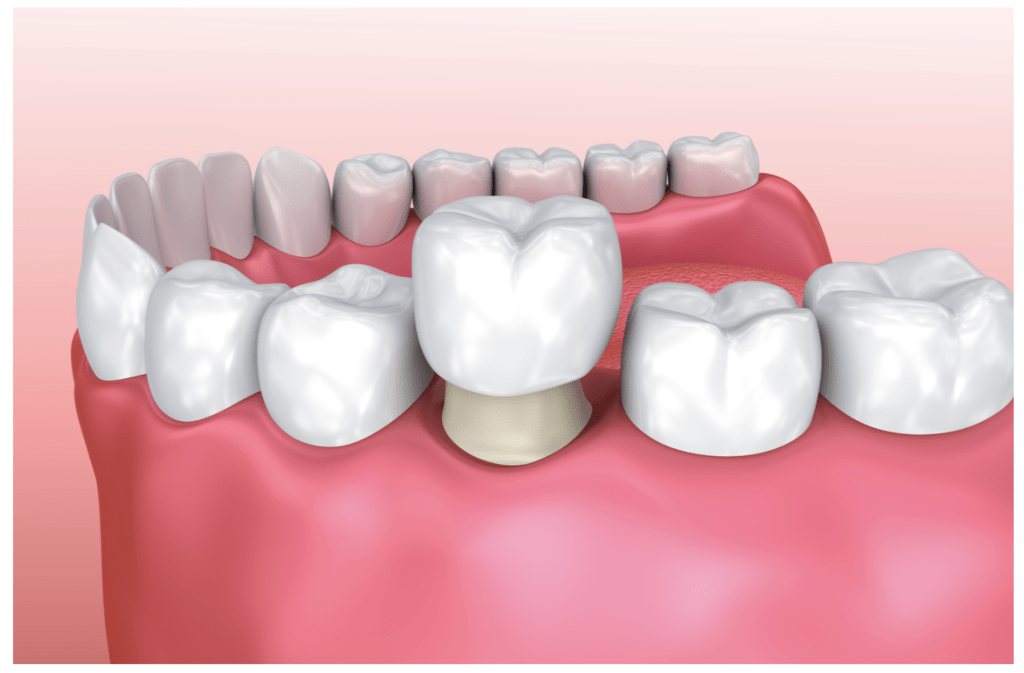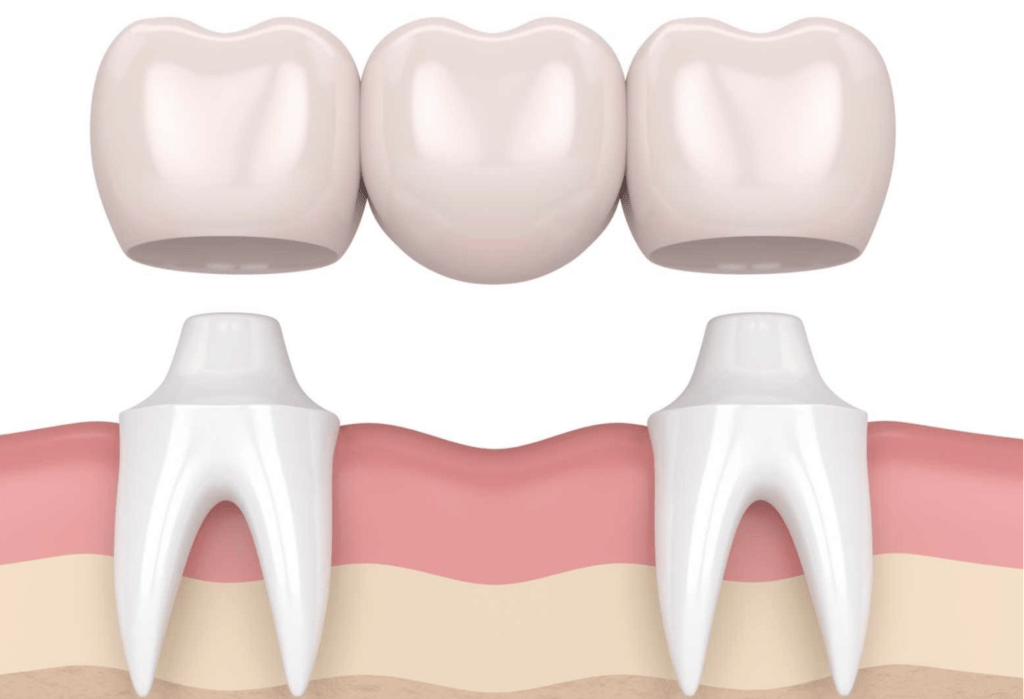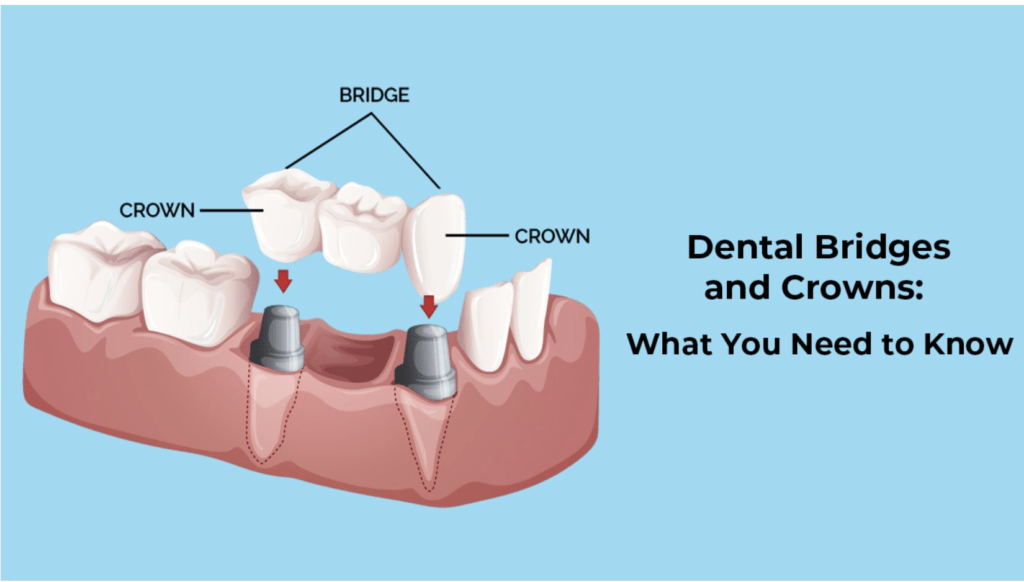Smile Vizag Dental Clinic: Your Destination for Beautiful Smiles
Crowns and Bridges
A beautiful smile is not just about having straight, white teeth. It’s also about having a healthy and complete set of teeth that function well. If you’re dealing with damaged or missing teeth, crowns and bridges might be the solution you’ve been looking for, which can be handled by Smile Vizag Dental Clinic.
In this blog, we’ll explore what crowns and bridges are, their benefits, the procedure, and what to expect.
Crowns
A crown, also known as a dental cap, is a tooth-shaped covering that is placed over a damaged or weakened tooth. It serves to protect, strengthen, and enhance the appearance of the tooth.

Crowns Needed
- Tooth decay that can’t be fixed with a filling.
- A cracked or fractured tooth.
- After a root canal procedure.
- For cosmetic improvements.
Benefits of Crowns:
Protection: Crowns protect the tooth from further damage by covering it completely.
Durability: Crowns are durable and can last for many years with proper care.
Functionality: A crown restores the function of a damaged tooth, allowing it to bite and chew properly.
Aesthetics: Crowns can improve the appearance of a tooth by covering discoloration or misshapenness.
Procedure
Fabrication of the permanent crown.The procedure for getting a dental crown usually requires two visits to the dentist.
During the first visit, the dentist will numb the area around the damaged tooth and prepare it by removing any decay and shaping it to fit the crown.
Then, an impression of the tooth is taken to create a custom crown that fits perfectly. A temporary crown is placed on the tooth to protect it while the permanent crown is being made.
In the second visit, the temporary crown is removed, and the permanent crown is placed on the tooth. The dentist will ensure that it fits well, and then cement it in place.
After the procedure, it’s essential to take good care of your new crown by brushing and flossing regularly and seeing your dentist for regular checkups. With proper care, your crown can last for many years.
Bridges
Dental bridges are used to replace one or more missing teeth by bridging the gap with artificial teeth, anchored to neighboring natural teeth or implants.

Types of Bridges:
Traditional bridges: These bridges consist of one or more artificial teeth, called pontics, that are held in place by dental crowns on either side of the gap.
Cantilever bridges: These bridges are used when there are adjacent teeth on only one side of the gap. The pontic is supported by a dental crown on only one side.
Maryland bridges: These bridges use a metal or porcelain framework bonded to the back of adjacent teeth, with the pontic suspended between them.
Benefits of Bridges:
Procedure
- Tooth Preparation: Your dentist will remove any damaged or decayed portions of the tooth and reshape it.
- Impressions: Impressions of the prepared tooth are taken to create a custom-made crown.
- Temporary Crown: A temporary crown is placed to protect the tooth while the permanent crown is being fabricated.
- Permanent Crown Placement: Once the permanent crown is ready, it is cemented onto the prepared tooth, restoring its appearance, strength, and function.
Bridges:
- Consultation and treatment planning.
- Preparing the abutment teeth.
- Impressions for the bridge.
- Temporary bridge placement.
- Fabrication and installation of the permanent bridge.
Procedure
- Tooth Preparation: If needed, the adjacent teeth (abutment teeth) are prepared by removing a portion of their enamel.
- Impressions: Impressions of the prepared teeth are taken to create a custom-fit bridge.
- Temporary Bridge: A temporary bridge is placed to protect the exposed teeth and maintain function while the permanent bridge is being fabricated.
- Permanent Bridge Installation: Once the permanent bridge is ready, it is cemented or attached to the prepared abutment teeth, effectively bridging the gap left by missing teeth.
- Post-Procedure Care: After the bridge is in place, proper oral hygiene and regular dental check-ups are essential to ensure its long-term success.
Caring for Crowns and Bridges:
- Maintain good oral hygiene with regular brushing and flossing.
- Avoid chewing hard objects.
- Visit your dentist for regular check-ups.

Conclusion:
Crowns and bridges are effective solutions for restoring your smile and maintaining oral health which can be taken care of by Smile Vizag Dental Clinic.If you’re experiencing dental issues like damaged or missing teeth, consult with your dentist to determine if crowns or bridges are the right choice for you. These treatments can bring back your confidence and help you enjoy a healthy, functional smile once again.
.
